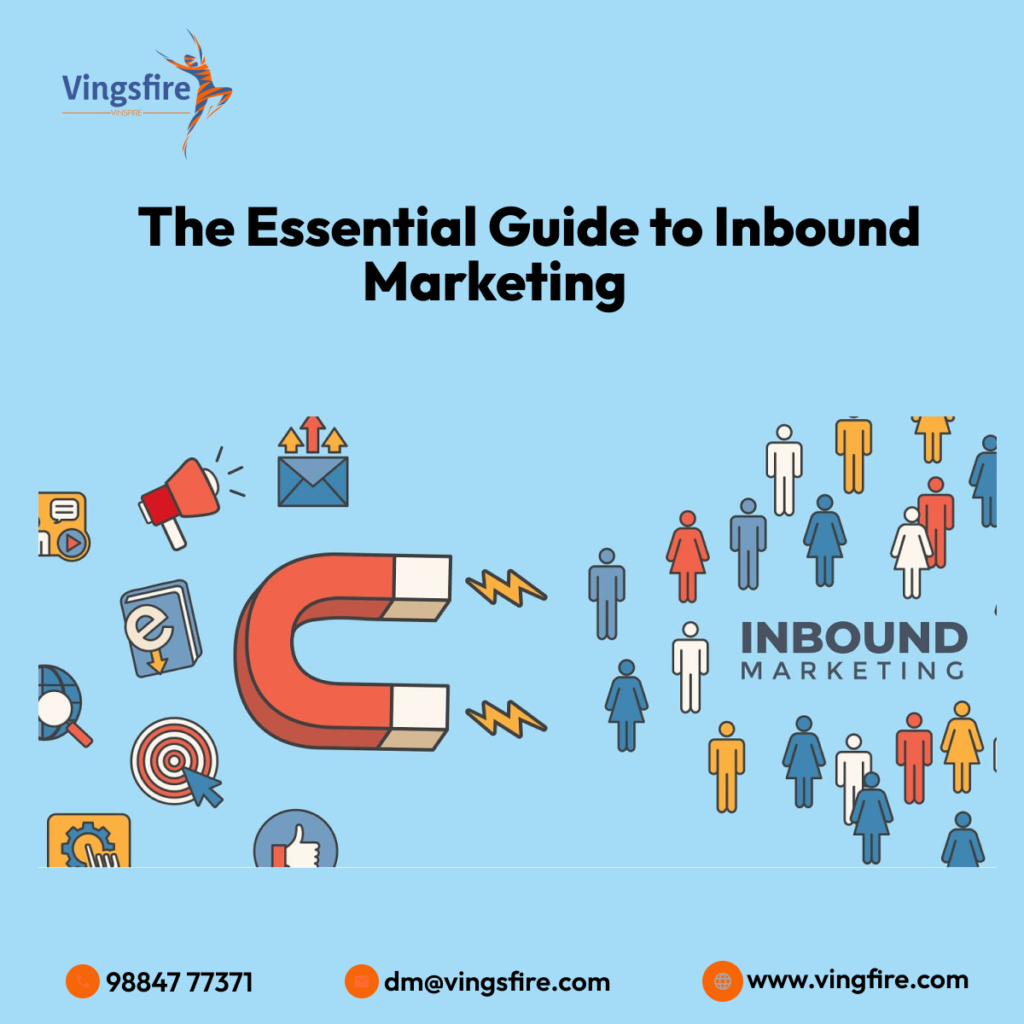
Introduction:
Inbound marketing has revolutionised the way businesses attract, engage, and delight customers by providing valuable content and experiences tailored to their needs and interests.
Unlike traditional outbound marketing tactics that interrupt audiences with irrelevant messages, inbound marketing focuses on creating meaningful connections and delivering value at every stage of the buyer’s journey.
In this comprehensive guide, we’ll explore the essential components of inbound marketing and provide actionable insights to help you harness its power and achieve your marketing goals effectively.
Understanding Inbound Marketing:
Inbound marketing is a customer-centric approach that focuses on attracting, engaging, and delighting customers through relevant and helpful content.
Unlike outbound marketing, which relies on interruption-based tactics such as cold calling and direct mail, inbound marketing seeks to earn the attention of prospects by providing valuable information and resources that address their needs and challenges.
By creating a positive and personalized experience for customers, inbound marketing builds trust, credibility, and loyalty over time.
The Four Stages of the Inbound Methodology:
The inbound methodology consists of four stages: attract, engage, delight, and empower. In attract stage, businesses attract visitors to their website and social media channels through relevant and optimized content, such as blog posts, videos, and social media posts.
The engage stage, businesses convert visitors into leads by offering valuable resources and solutions to their problems, such as ebooks, webinars, and email newsletters. In the delight stage, businesses delight customers by providing exceptional service and support, encouraging advocacy and loyalty.
Finally, in the empower stage, businesses empower customers to become advocates and promoters of their brand, turning them into evangelists who spread positive word-of-mouth and refer new customers.
Creating Valuable Content:
Valuable content is the cornerstone of inbound marketing, serving as a magnet to attract and engage audiences. Businesses must create content that is relevant, informative, and helpful to their target audience, addressing their pain points and providing solutions to their problems.
From blog posts and videos to ebooks and podcasts, businesses can leverage a variety of content formats to appeal to different audience preferences and learning styles.
By consistently delivering valuable content that resonates with their audience, businesses can build trust, establish credibility, and position themselves as thought leaders in their industry.
Optimizing for Search Engines:
Search engine optimization (SEO) is essential for maximizing the visibility and discoverability of your inbound marketing content.
By optimizing your website and content for relevant keywords and phrases, businesses can improve their search engine rankings and attract organic traffic from search engines like Google. Key SEO tactics include keyword research, on-page optimization, link building, and technical SEO.
By following best practices and staying up-to-date with algorithm changes, businesses can ensure that their content ranks well in search engine results pages (SERPs) and reaches a wider audience of potential customers.
Leveraging Social Media:
Social media plays a crucial role in inbound marketing, providing businesses with a platform to engage with their audience, amplify their content, and build relationships with customers.
By sharing valuable content, participating in conversations, and fostering community engagement, businesses can attract followers, increase brand awareness, and drive website traffic.
Social media also offers valuable insights and analytics that businesses can use to understand their audience’s preferences and behavior, inform their content strategy, and optimize their social media marketing efforts.
Nurturing Leads with Email Marketing:
Email marketing is a powerful tool for nurturing leads and guiding them through the buyer’s journey. By delivering targeted and personalized email campaigns to leads at each stage of the funnel, businesses can provide valuable information, offer solutions to their problems, and encourage them to take the next step in their journey. Key email marketing tactics include segmentation, personalization, automation, and A/B testing. By delivering the right message to the right person at the right time, businesses can nurture leads effectively and drive conversions.
Measuring and Analyzing Results:
Measuring and analyzing results is essential for optimizing your inbound marketing efforts and driving continuous improvement.
Businesses should track key performance indicators (KPIs) such as website traffic, email open and click-through rates, social media engagement, and customer satisfaction.
By analyzing performance data, identifying trends , and iterating on their strategy based on insights, businesses can refine their inbound marketing efforts and maximize their return on investment (ROI).
Conclusion:
Inbound marketing offers businesses a customer-centric approach to attracting, engaging, and delighting customers through valuable content and experiences.
By understanding the principles of inbound marketing and implementing best practices, businesses can build trust and drive meaningful relationships with their audience.
Embrace the power of inbound marketing to transform marketing strategy and achieve your business goals effectively in today’s digital landscape.
